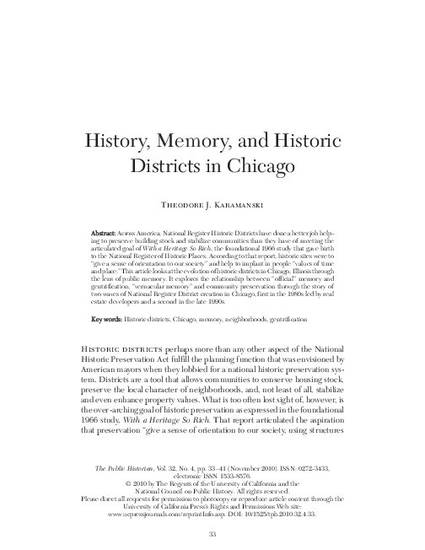
Across America, National Register Historic Districts have done a better job helping to preserve building stock and stabilize communities than they have of meeting the articulated goal of With a Heritage So Rich, the foundational 1966 study that gave birth to the National Register of Historic Places. According to that report, historic sites were to “give a sense of orientation to our society” and help to implant in people “values of time and place.” This article looks at the evolution of historic districts in Chicago, Illinois through the lens of public memory. It explores the relationship between “official” memory and gentrification, “vernacular memory” and community preservation through the story of two waves of National Register District creation in Chicago, first in the 1980s led by real estate developers and a second in the late 1990s.
© University of California Press, 2010.

Author Posting © 2010 by The Regents of the University of California and the National Council on Public History. This article is posted here by permission of University of California Press for personal use, not for redistribution. The article was published in The Public Historian, Volume 32, Issue 4, August 2010, http://dx.doi.org/10.1525/tph.2010.32.4.33